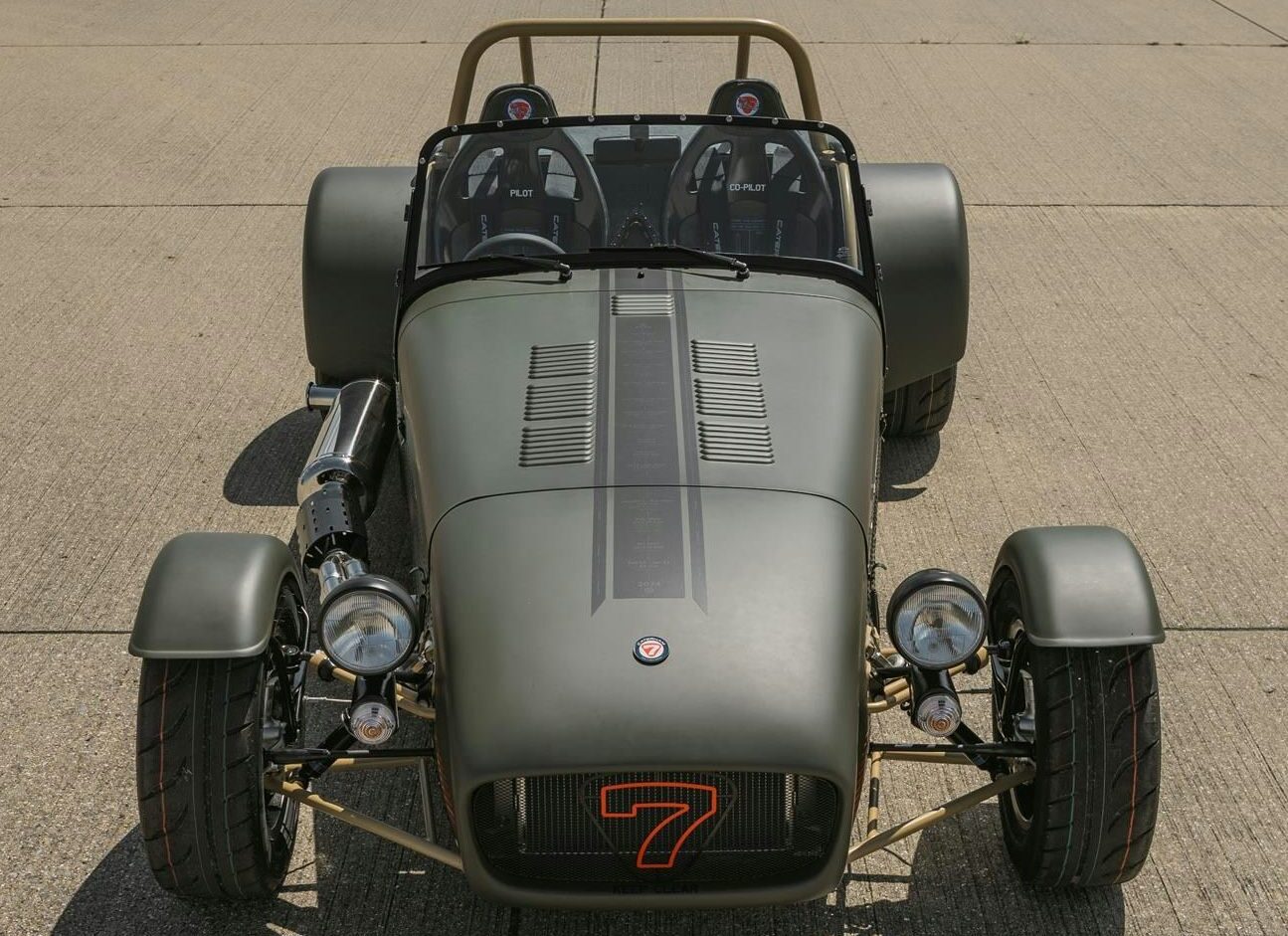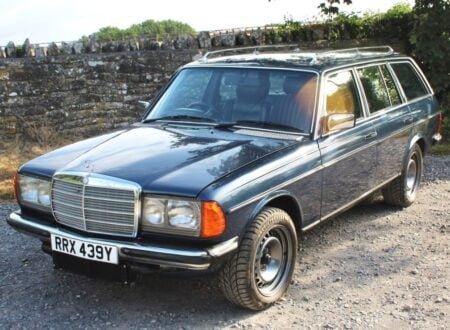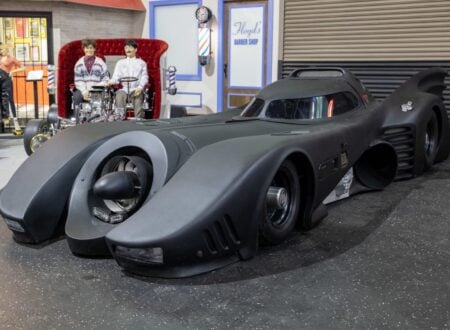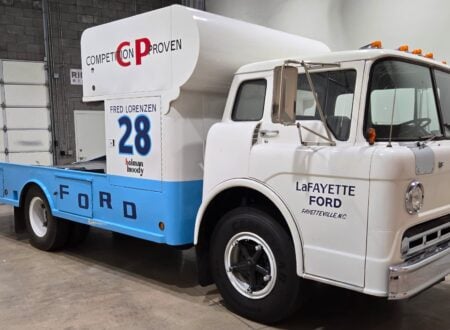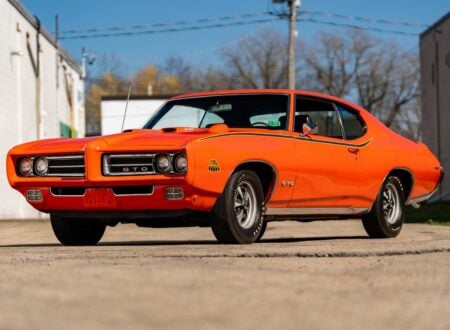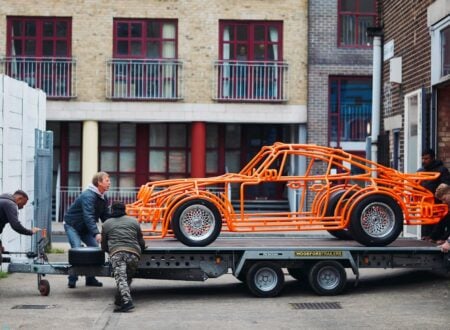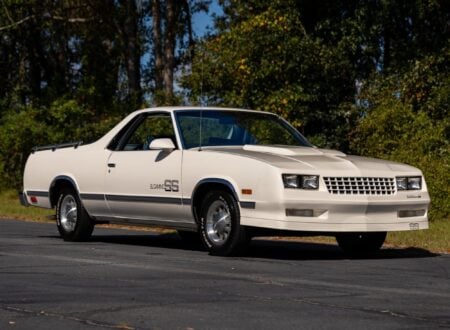This Caterham Seven 360R has been specially modified with many parts and bodywork from an Puma HC2 helicopter, it’s now being offered for sale out of the UK, with the proceeds going to Mission Motorsport and The Royal Air Force Benevolent Fund.
The Caterham Seven 360R has enjoyed rave reviews since its release, offering that razor sharp handling that Seven’s are renowned for, coupled with an easy-to-maintain drivetrain headed up by a 180 bhp 2.0 liter Ford Duratec inline-four.
Fast Facts – The Caterham Seven 360R “RAF Puma HC2”
- This Caterham Seven 360R “RAF Puma HC2” is a modified version of the standard 360R, incorporating bodywork and parts from a Puma HC2 helicopter, including aluminum skin sections, a rear bulkhead, and helicopter-inspired interior elements.
- The Caterham Seven 360R, based on the Lotus 7, is known for its lightweight, minimalistic design, delivering a raw driving experience. It’s powered by a 2.0 liter Ford Duratec engine, producing over 180 bhp and achieving a 0-60 mph time of 4.8 seconds.
- The “RAF Puma HC2” version retains original RAF insignia and serial numbers from the helicopter parts. It also features a unique three-stage ignition sequence control panel, military-grade gauges, and soundproofing from the helicopter.
- The car is road-legal in the UK, and the sale proceeds will benefit Mission Motorsport and The Royal Air Force Benevolent Fund. It is being offered for sale in Oxfordshire, UK, with the new buyer becoming its first registered owner.
The Caterham Seven 360R
The Caterham Seven 360R was developed by the low-volume British automaker as an approachable example of the inimitable Seven, that is 100% ready to be used on the track, on the street, or on both depending on where your mood may take you.
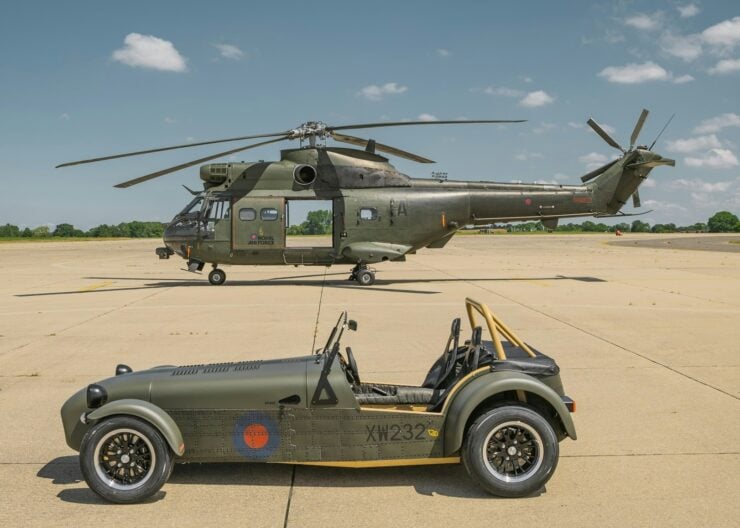

I won’t go into a deep dive on Caterham history here, as most in the world of motordom know it already, I’ll just note that the Caterham Seven is directly based on the Lotus 7 that debuted in 1957. Caterham bought the rights and tooling to the design in 1973, and they’ve kept it in production ever since – with gradual updates over time.
The Caterham Seven is famous for its raw, visceral driving experience. It’s essentially three pedals, a steering wheel, and shifter with the lightest possible car built around it. Some have described the experience of climbing into a Seven to be akin to strapping it to your back, and with a curb weight of just 565 kgs (or 1,245 lbs) it’s not hard to see why.
As with the other Sevens in the model range, the Seven 360R features a box section tubular steel chassis, independent front and rear suspension, four wheel disc brakes, seating for two, and a front-mid-mounted engine sending power back to the rear wheels.
The Seven 360R is fitted with the highly-regarded 2.0 liter Ford Duratec inline-four which is mated to a 5-speed manual gearbox. This engine is good for 180+ bhp at 7,300 rpm with 143 lb ft of torque at 6,100 rpm, and it’s known for being tame lower in the rev range, with most of the power coming in at higher-rpms.
These characteristics makes the 2.0 liter Ford Duratec ideal for use in the Caterham Seven, as it can be mild-mannered and polite around town, and then turn into a barn storming screamer, all without having to change engine settings.
Thanks to the low curb weight and good power-to-weight ratio, the Caterham Seven 360R is a quick car by any standard, completing the 0 – 60 mph sprint in just 4.8 seconds, onto a top speed of 130 mph.
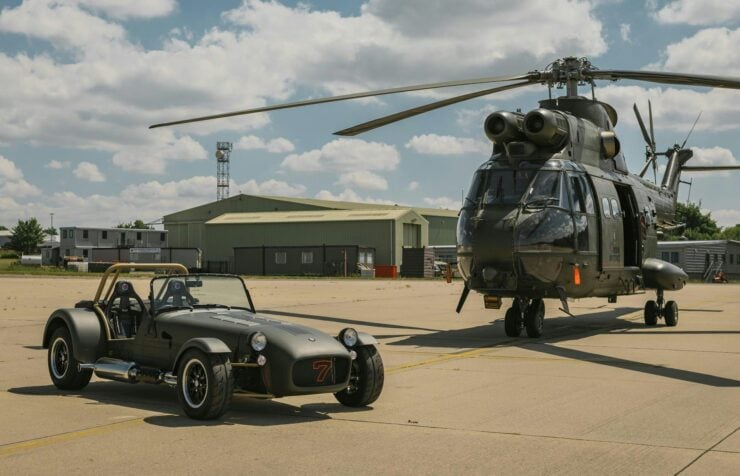

The true native habitat of the Caterham Seven is the winding mountain road or race track, where its driving characteristics can be on full display – and they often embarrass far larger and more powerful sports cars.
The Caterham Seven 360R “RAF Puma HC2” Shown Here
The car you see here started out as a standard Caterham Seven 360R, but it’s now been significantly modified as a joint project between Caterham and the Royal Air Force.
Aluminium skin sections from a Puma HC2 helicopter’s tail boom and doors have been used for parts of the car’s bodywork – retaining the rivets, original RAF insignia, and the helicopter serial number. You can see these sections down either side of the car, and at the rear.
The helicopter’s internal rear bulkhead is even in place behind the seats, including the emergency door jettison handle, and quilted soundproofing from the chopper has been used extensively inside the car, including on the side panels, the center tunnel of the cabin, and the center panels of the carbon-fiber bucket seats.
The dashboard has been completely rebuilt, now incorporating a three-stage ignition sequence control panel, the helicopter’s navigation clock, and repurposed military-grade gauges and switchgear.
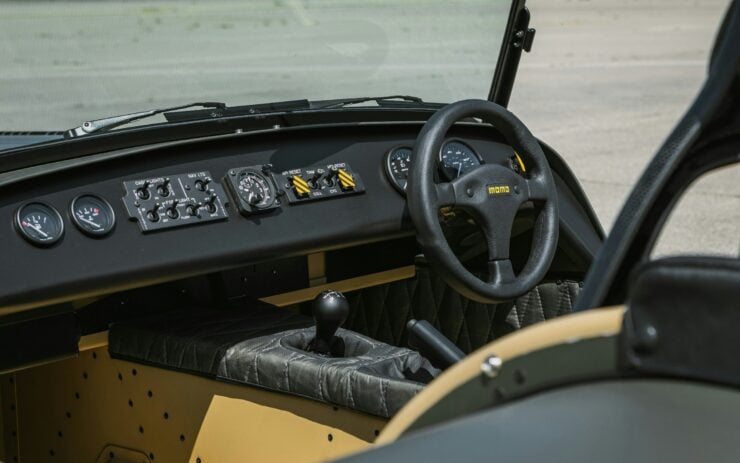

The car is now complete and it’s brand new – the buyer will become the first registered owner. Caterham have already had the vehicle put through the UK IVA process to ensure that it’s all road legal, and the paperwork is all on file which will make registration in the UK a straight forward process.
If you’d like to read more about the car or register to bid you can visit the listing here on Collecting Cars. It’s being offered for sale out of Oxfordshire in the United Kingdom and as noted above, the proceeds go to Mission Motorsport and The Royal Air Force Benevolent Fund.
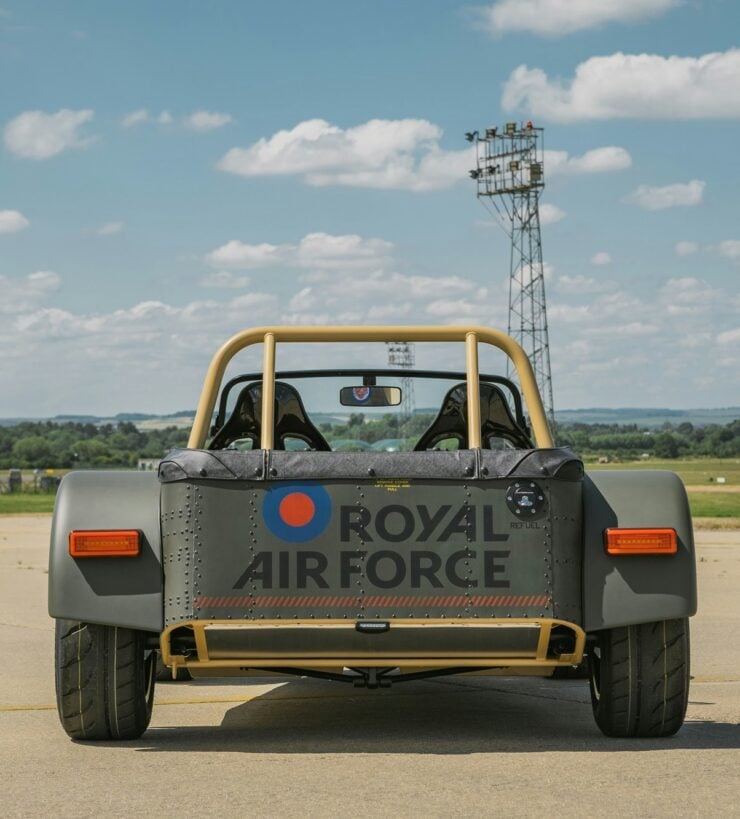

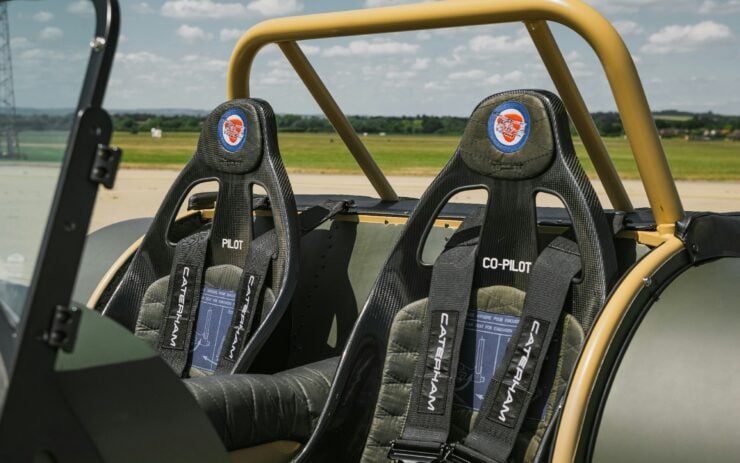
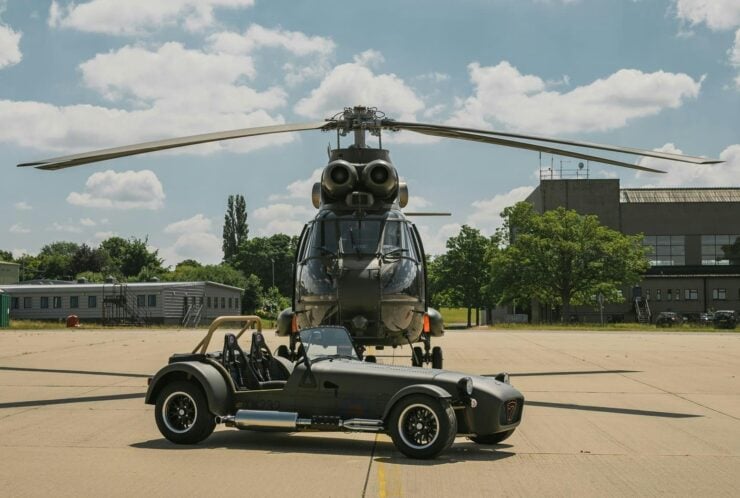
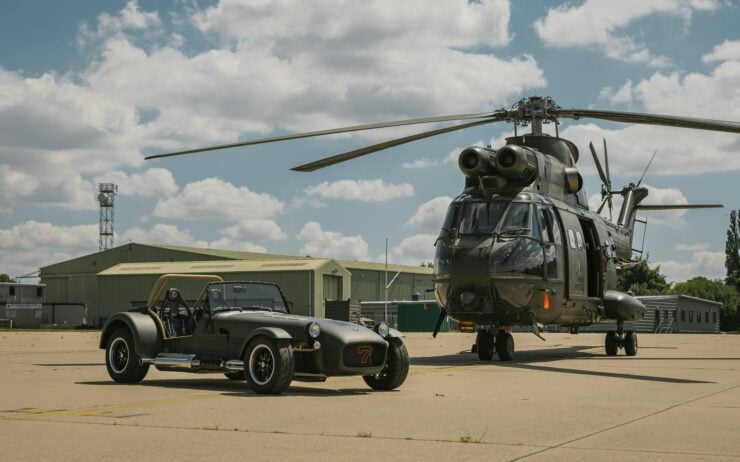
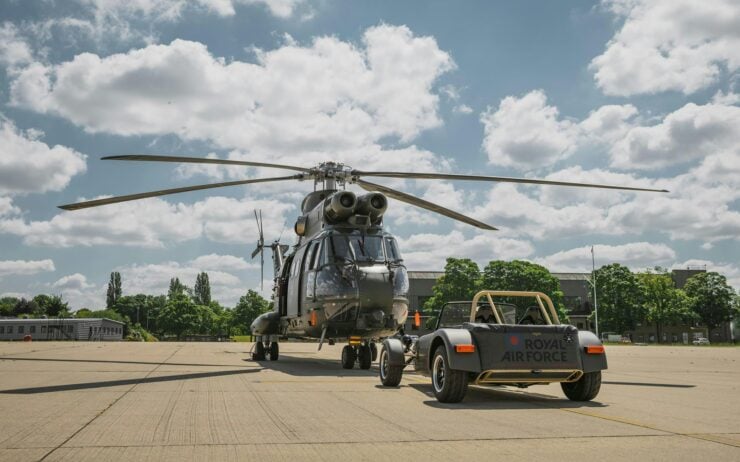
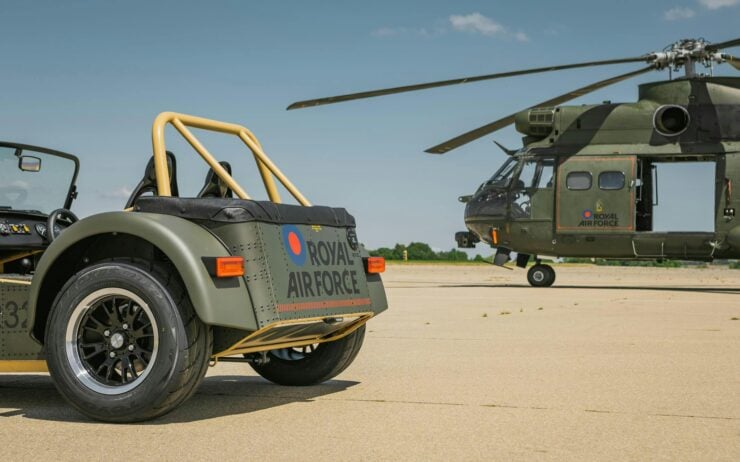
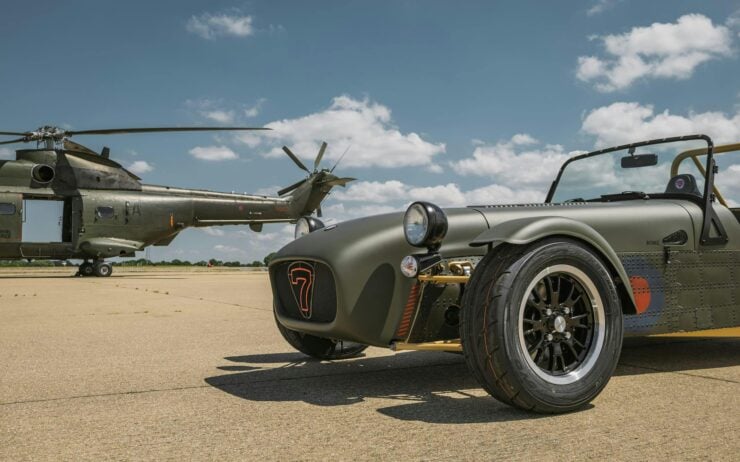
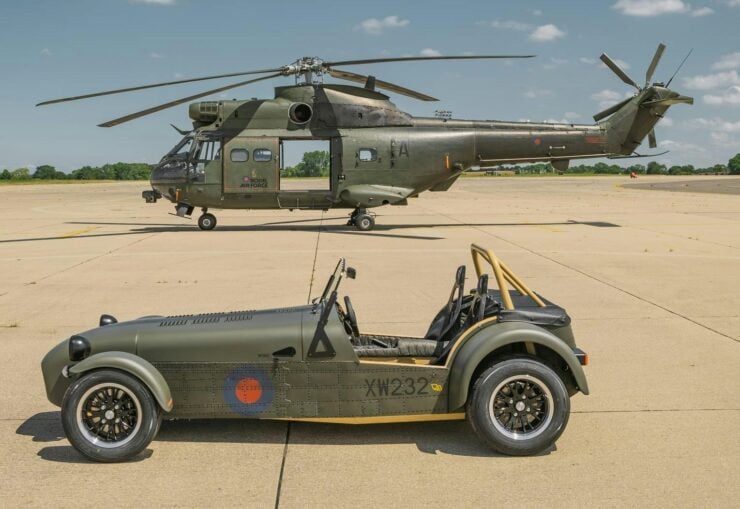

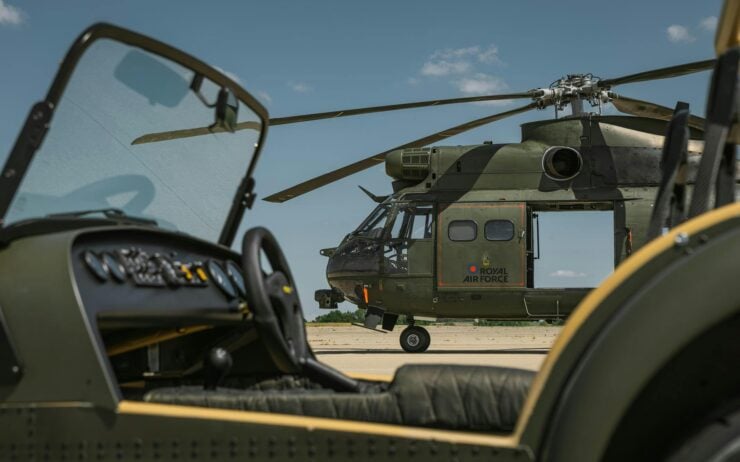
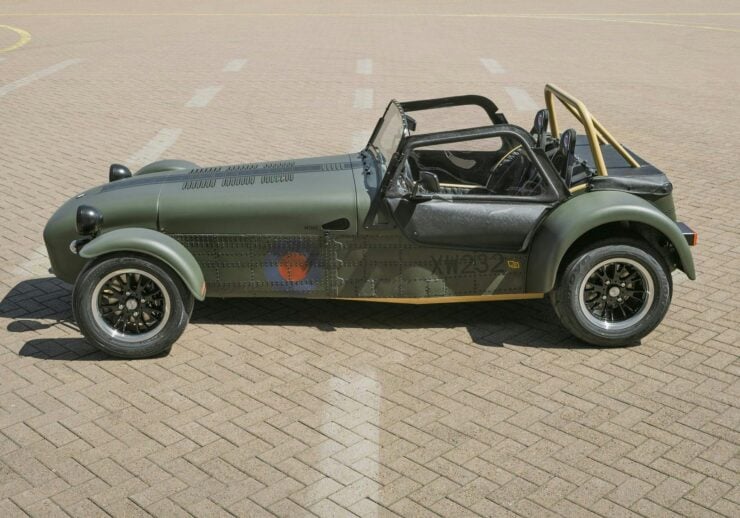
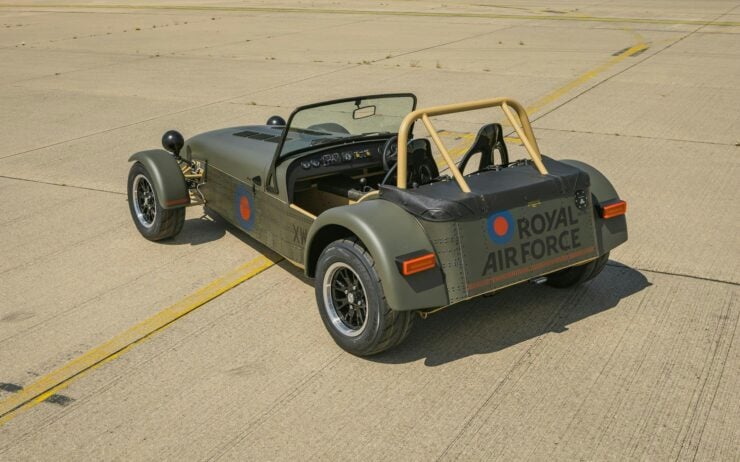
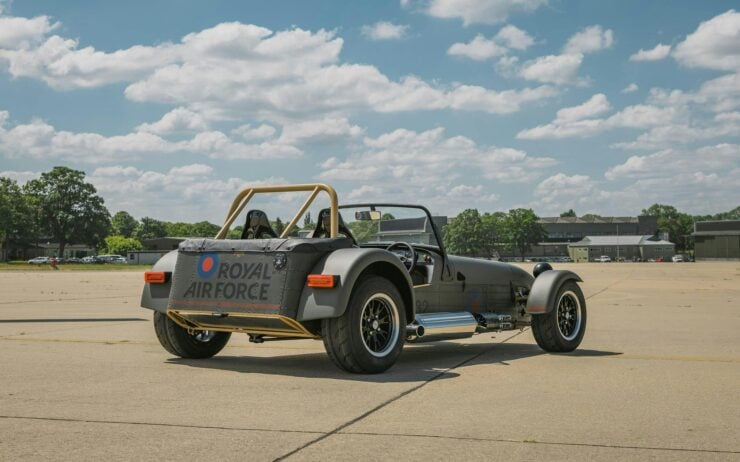
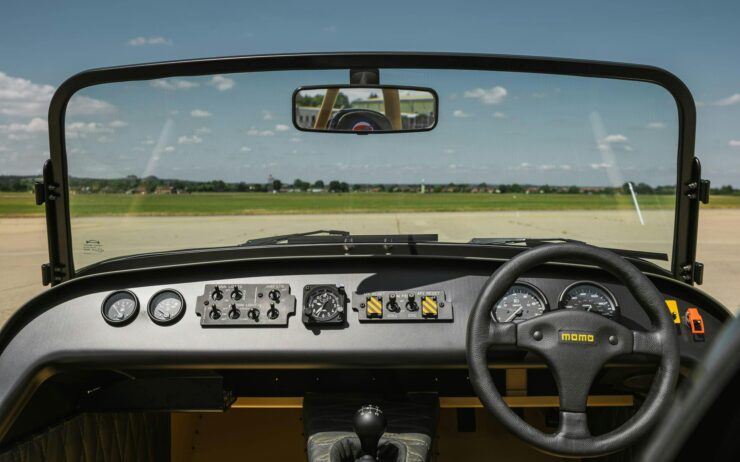
Images courtesy of Collecting Cars

